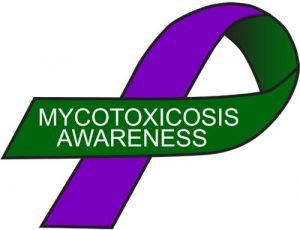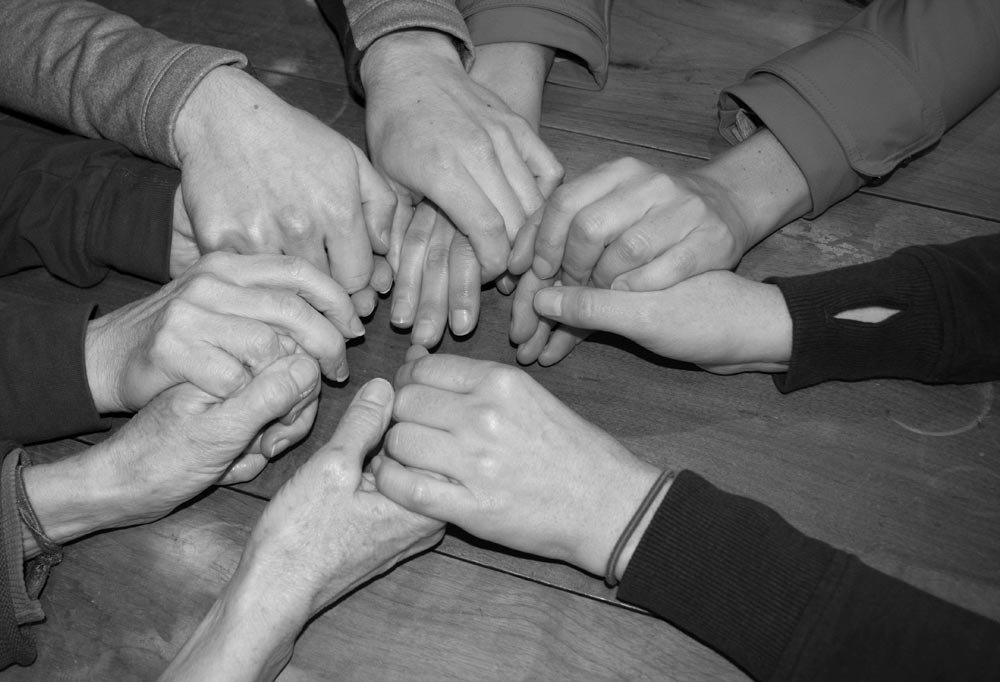When I was younger I prayed that if I had to get sick, I’d get a movie star illness—one with a color, ribbon, and celebrity spokespersons. It’s not that I wanted to be ill, but in my family broke-down-body lore was a frequent supper topic and bedtime story, complete with mysterious myalgias, fogs, and cases of The Nerves. For years, I thought I’d descended from malingerers or hypochondriacs. I moved six hundred miles away to avoid their fate, believing that, if there was in fact a problem, it was likely the water, Upstate New York’s benzene-soaked soil, or the pessimism my family held dear.
Then I got sick.
In 2012 I was diagnosed with Lyme disease four months after a tick bite that didn’t leave a rash. Six months later the CDC revised its statistics to cite over 300,000 cases per year. But at the time of my diagnosis, Lyme was seen as a rare phenomenon treatable with a three-week regimen of antibiotics.
Except I got worse. Way worse. By the fifth week of my three-week doxycycline prescription I was losing words during the daytime and entire sentences by sundown. I had a constant case of flu-like symptoms and quickly learned the nuances of pain—ice pick versus cramping versus stabbing versus dull ache. The experience was like having influenza, Alzheimer’s disease, and rheumatoid arthritis all at once. This misery lasted for over three years. On more than one occasion I wondered if my days were numbered.
Panicked by my cluster of symptoms and family penchant for breaking down, I insisted on seeing a Lyme Literate Doctor, or LLMD. She asked me a rapid-fire succession of questions: Did I move recently? Had I started a new job? Remodeled a house? Struggled with depression? Have a family history of strange ailments? Yes to all accounts.
“It’s simple,” she said, writing in my chart. “You also have mold illness.”
“You’ve got to be joking,” I said, disbelieving I could have something that sounded so phony.
She confirmed her diagnosis with a genetic test: I had an HLA gene mutation—one that prevents the body from eliminating mold toxins from water-damaged buildings. I would later learn that HLA coupled with a series of methylation mutations in the same category as MTHFR disrupted my body’s ability to absorb key nutrients, allowing toxins to have a dance party in my blood. The buildup of toxins chipped away at my immune system. The minor (and not so minor) illnesses I’d had a child and young adult—asthma, mononucleosis, autoimmune thyroid disease—were precursors to this catastrophic episode. Lyme, at a time of mold exposure, was just the final push.
MTHFR. If you see one of George Carlin’s filthy words in this acronym, that’s how it feels to get one of these diagnoses—like you not only have something that sounds made up, but you’re also cursed.
For years, I’d worked as a teacher in the inner city where roof leaks seemed like part of the job description. Worse, two years before I was born, my hometown—Elmira, New York—was devastated by the flooding caused by 1972’s Hurricane Agnes, a super storm whose damage along the east coast was categorized as the worst flooding disaster in U.S. history prior to Hurricane Katrina. At the time of the flood, two-thirds of Elmira was underwater. Afterwards, residents cleared out the mud from basements, living rooms, and kitchens. Some of those water-damaged buildings were turned into apartments my family rented in the years before illness ribbons were in fashion.
Ribbon campaigns for breast cancer and HIV/AIDS started in 1991. The first time I wore a red ribbon was in 2000 for a National AIDS Day campaign at the University of Louisville. Pinning one on my shirt was a statement of solidarity, a way to acknowledge a misunderstood struggle. Soon after, these signs of hope were monetized and magnetized for our bumpers.
At least fifteen years ago, I played a punching game on a road trip with a friend. We knocked each other on the bicep whenever a ribbon was spotted, reveling in doubles (yellow and pink for the troops and cancer) or the occasional triple (two for the troops and one for cancer). As we crossed the state line between Tennessee and Georgia, my friend spied the mother lode—a car with at least ten ribbons in yellows, pinks, reds, and purples. The punches came like machine gun fire, so fast they couldn’t be differentiated. The absurdity was hysterical.
Looking back, that car could’ve been driven by a relative.
Three years before my Lyme diagnosis, I ran in our local Race for a Cure 5K, which raises money for breast cancer research. Pink ribbons covered the race site and course. Gaggles of women jogged together in matching “I’m a survivor” t-shirts. Others wore handkerchiefs and soft cotton hats over bald heads. A few penciled in their hairless eyebrows. I ran for my aunt who was losing her battle with breast cancer and my grandmother who’d go on to live another five years. Both fought bravely. Both also struggled with mystery illnesses few accepted were real. But no one questioned their cancer suffering. They just wore pink to show support.
Even NFL players wear pink shoelaces in support of Breast Cancer Awareness Month. I bet if you looked in stadium parking lots, you’d find an array of ribbons for various ailments: red for AIDS/HIV, purple for Alzheimer’s disease, the variegated puzzle piece for autism. In fact, according to disabled-world.com, there’s even a multicolored flame ribbon for complex regional pain syndrome or CRPS, a progressive disease of the autonomic nervous system.
In 2014, I discovered that Lyme was assigned a color: Lyme green. There are now ribbons and challenges. Celebrity Lyme stories from Yolanda Foster, Debbie Gibson, and Avril Lavigne have graced the covers of glossies like People and Us. In May of 2016, fashion designer Tommy Hilfiger’s daughter, Ally, published Bite Me, a memoir about her decades-long struggle with chronic Lyme. Now when I talk about my chronic Lyme diagnosis people nod and quote news stories. Some share their own illness woes.

A site on Pinterest is lobbying for an MTHFR ribbon along with t-shirts emblazoned with “I’m a bad MTHFR.” The Spoonie Chronicles, a courageous personal blog about one woman’s battle with multiple chronic illnesses, sports a purple and green ribbon for mold illness that reads “Mycotoxicosis Awareness.” With just a few clicks and $7.99 supportouribbons.com will create these custom ribbons. How many do we need to purchase and affix to bumpers before these illnesses are seen as official?
This ribbon craze makes me wonder about the color of invisibility, about all those people who wonder what’s wrong, or know what’s wrong but can’t find the right help. Like me, they’ve seen a parade of doctors, sheepishly revealed strange and embarrassing symptoms—like having to pee ten times per night—and tried not to cry when test results were normal.
I’m one of the lucky ones. A doctor believed me and correctly diagnosed my illness. Access to the not-covered-by-insurance treatments that led to remission was made possible. I want to believe that I don’t need a color to legitimize my suffering; that having a diagnosis means I can go to any doctor and share my pain, list of medications and supplements, or medical history and feel understood. I want to believe I can pin on a ribbon I designed for $7.99 and hear words of comfort and perhaps comments on my courage. But I’ve sat on too many exam tables and been told, “You just need to relax and maybe take a vacation,” or had my hand patted as eyes glazed over so far I could guess the physician’s thoughts—“somaticizer, malingerer, hypochondriac”—to believe universal acceptance is possible.
The stakes for MTHFR and its genetic friends are as high as saying that filthy word in church. According to Dr. Shoemaker, a leading physician in mold illness treatment, the symptoms resulting from HLA and MTHFR gene mutations coupled with exposure to water-damaged buildings are frequently misdiagnosed as fibromyalgia, chronic fatigue syndrome, and multiple sclerosis to name a few. Some add schizophrenia to the mix. When the diagnosis is wrong, the damage caused by living or working in moldy buildings continues. Sometimes it’s irreversible.
But I don’t have to look on the web to understand my genetic mutation’s toll.
My great-grandmother died at age thirty-two from uncontrollable high blood pressure, likely caused by Graves disease, an autoimmune thyroid condition. At age fifty-eight, my grandmother retired to her couch six years after the flood of 1972 ravaged the hospital where she worked. She complained of stomach ailments, migrating pains, and a case of The Nerves. Once on the couch, she rarely left her first-floor apartment, which had also been damaged in the flood. My mother went on disability at age thirty-eight after a fall and has been diagnosed with a handful of rare illnesses including lupus, rheumatoid arthritis, fibromyalgia, and gastro paresis. I broke down with Lyme and mold illness at the same age she went on disability. But worst of all, my twenty-year-old brother died by suicide after living in an apartment that had survived the flood. He struggled with depression and perhaps something more. While the causes of suicide are complex, I wonder if one of these mutations played a role.
Society does not see those of us living with the complex array of medical problems mutated genes create as survivors, warriors, or poor things. Some call us crazy, lazy, or melodramatic. Others smile and say, “But you look so good,” which is far worse. No matter the response, we trudge on silently, work hard to keep our bodies healthy, and pick ourselves up after a relapse. Unless a cure is found, this is our fate. But we don’t have to do this alone.

Once a month I meet with a group of Lyme and Mold Warriors and bad MTHFRs at a local coffee shop for support. As we warm our hands on ceramic mugs of herbal tea, we cheer remission victories and share strategies for getting and staying well. We roll our eyes at doctors who still believe true suffering is color-coded and praise the ones who don’t. More often than I would like, someone new—and just as sick as I once was—joins us. As symptom trials and tribulations are shared, we solemnly nod, each of us having been there. The men and women around the table are my celebrities. Our linked hands, the ultimate form of hope.

An Interview with Lisa Ellison
by Streetlight editor Susan Shafarzek
One of the things I admired about this essay was the way you handled some very difficult subjects. Can you say what was the hardest to deal with?
At one point in my life I would have said writing about my brother’s suicide was the most difficult topic I address. But, I’ve written about it many times before, and enough time (and therapy) has passed that I have found peace with that loss. This essay was my first attempt at writing about what it was like to experience an invisible illness over a period of years—an experience that had been passed down through at least four generations of my family. Lyme disease, and the cluster of other illnesses that came with it, made every waking moment a challenge. It was difficult to distill my physical suffering down to a few scenes so I could maintain the essay’s focus.
The subject matter in this essay might also have been approached as a journalistic endeavor, even as first-person reporting. Can you talk about how using the memoir form seemed more effective for you?
During my graduate work in counseling, I learned the importance of understanding the self in order to be of service to others. Like Joan Didion, I write to understand myself and the world. For me, memoir best serves this endeavor.
I read many illness memoirs, such as Sarah Manguso’s Two Kinds of Decay, during my recovery. Memoir, as a form, requires the narrator to reflect and work to arrive at answers regarding an experience’s meaning. Early in my disease, I knew the level of devastation I felt about being ill exceeded the circumstances of my experience (which were dire on their own), but I had no idea why. Through the many drafts of this essay, I realized that falling ill at the same age my mother went on disability tapped into my own grief about having ill care takers and how much I’d underestimated their suffering. I wanted to understand my family’s legacy of illness, and how that legacy bumped up against the perceptions of suffering I’d encountered over the years. I hope to use the insights gained through this essay to write more journalistic pieces about chronic disease in the future.
I am struck by the level of optimism you reach in dealing with some hard things. Would you like to speak about how you achieved this attitude?
My current optimism is the hard-won reward of recovery. I feel better, therefore I have a better outlook. But, that’s a simplistic answer to a complicated question. Recovery required me to strengthen a mindfulness practice I’d honed over many years and to learn new levels of self-compassion and forgiveness.
Loss of any kind brings us to a crossroad where we either find hope or lose ourselves to despair. Often we wander and experience a bit of both before a guide shows us the way. I have been blessed to have many guides. And, I’ve allowed myself to feel the complex array of feelings loss and difficulty bring to my life. Writing about those feelings was key to my recovery. It put me in touch with some courageous and generous people who taught me about the tenacity of the human spirit.
I get a sense this is part of something bigger. Are you currently working on a longer piece? Will this essay be part of it?
I’m currently working on a memoir about growing up in the Rust Belt during the 1980s recession. It’s about my desire to belong in a crumbling family and economy and choosing to leaving at the age of seventeen. My family’s illness narrative appears in the book; however, it only plays a minor role. I plan to write another memoir about the interplay of trauma, illness, and recovery in the future. This essay will help me build the framework for that book.
Follow us!Share this post with your friends.


Lisa, I had no idea! How brave and strong you are. Thank you for the many insights I’ve gained through this essay.